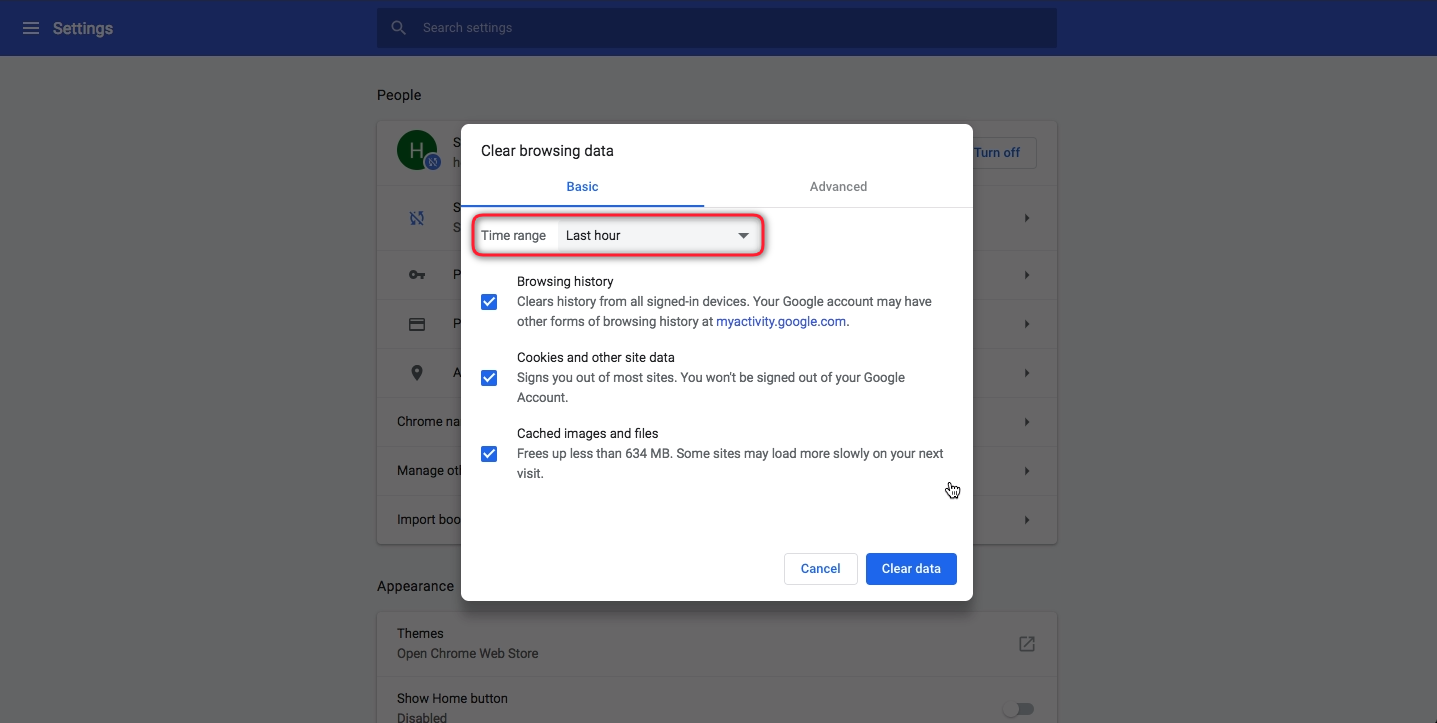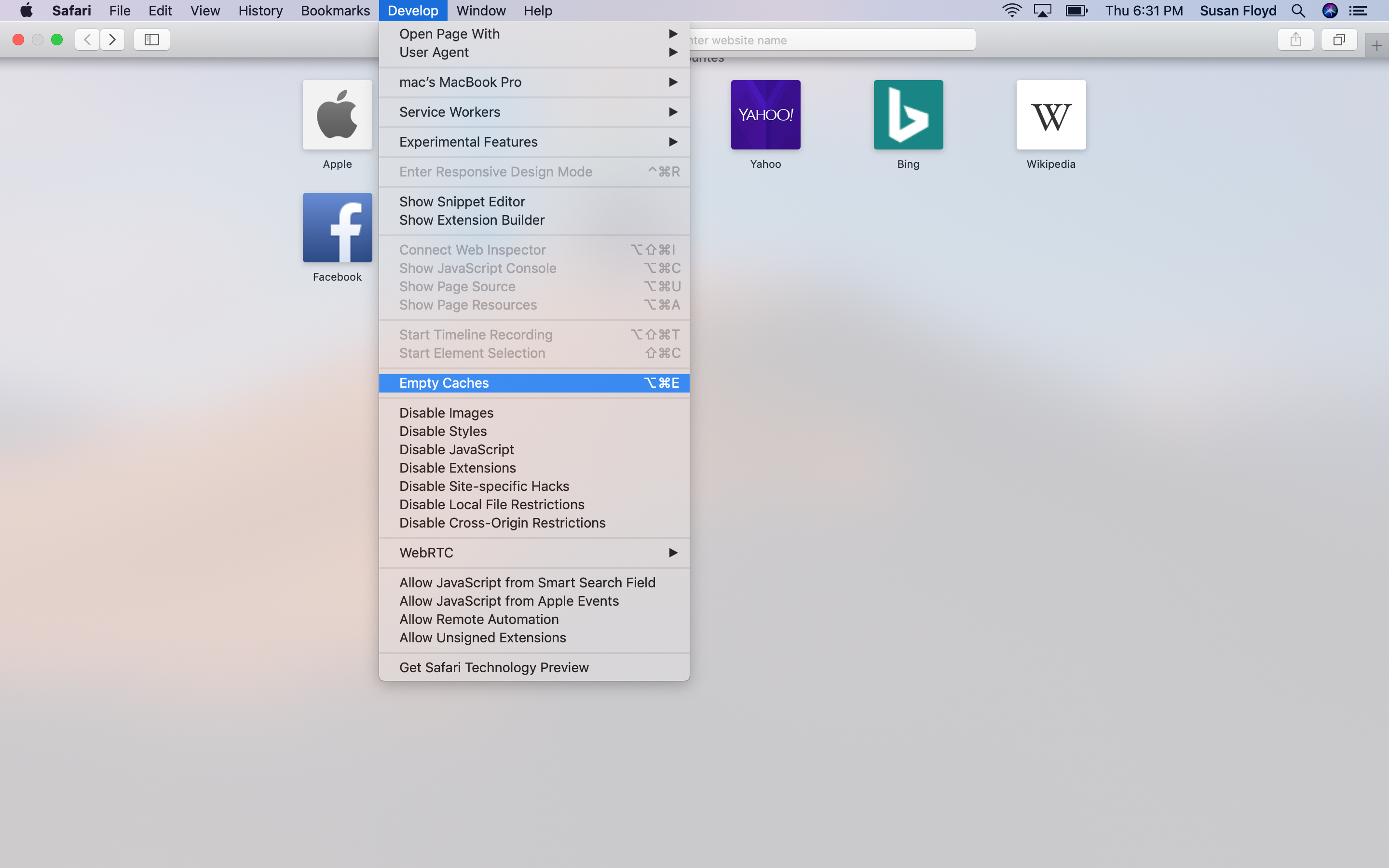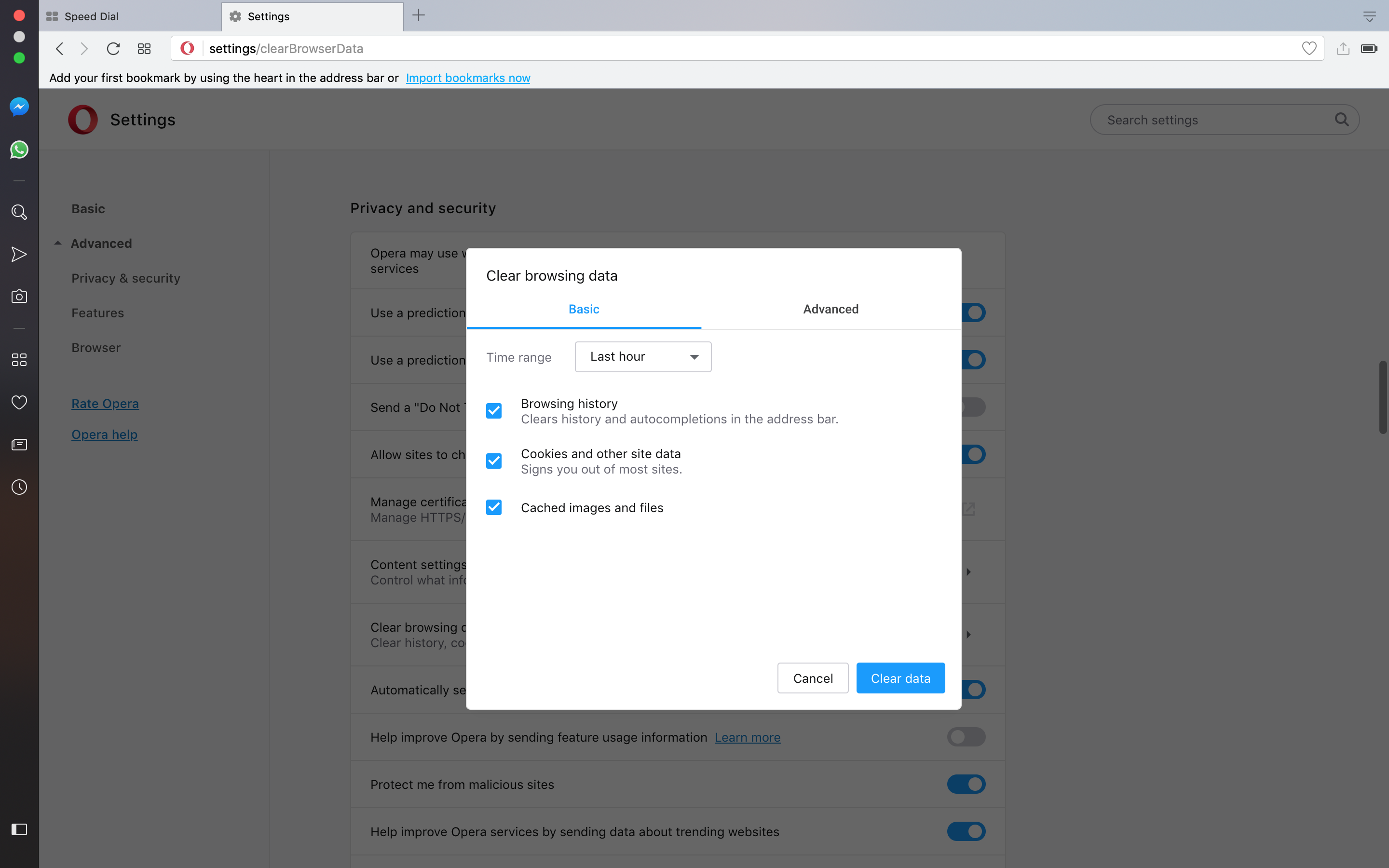Category filter
How to clear cache and hard reload browsers
A cache is a collection of web pages, including the texts, images and most other media contained on them, that is stored on your hard drive or phone storage. Having a local copy of a webpage helps to quickly load the page on your next visit because your system or device doesn’t have to download the same information again from the internet.
Cached data in the browser sounds great, so why do you ever have to clear it?
You certainly don’t have to, not as a regular part of computer or smartphone maintenance, anyways. However, a few good reasons to clear the cache are
- Clearing your cache forces your browser to retrieve the newest copy available from the website, which should happen automatically but sometimes does not.
- You might also want to clear your cache if you face issues like 404 or 502 errors, sometimes indicating that your browser’s cache is corrupted.
- Another reason to delete your browser’s cache data would be to free up space on your hard drive. Over time, the cache can grow up in space and so clearing it would add to more productive space.
If you are making frequent changes to a web page, the caching mechanism can cause confusion. Some changed elements on the page may load, and some may not because your browser is still using the older, cached version of the site rather than the updated version.
To troubleshoot this, you can try hard reloading the browser which allows to bypass the cache on your system and re-download everything for the web page, thereby ensuring that you are viewing the most recent version of the web page.
In Windows, the shortcut for this is Control+F5. On a Mac, the shortcut is Command+Shift+R.
Using developer tools
One of the ways to clear cache and hard reload the browsers without going through the browser menu is to use the browser’s built-in developer tools. This process is usually quicker than the browser-recommended process.
Using Chrome developer tools
Assuming you have the Chrome browser window opened, press Control+Shift+I on Windows and Command+Option+I on MacOS. This opens the Chrome developer tools. When the developer tools console is open, right-click on the Reload button. A drop-down menu with three options is displayed:
- Normal reload
- Hard reload
- Empty cache and hard reload
Normal reload– Uses cached data. Press F5 to initiate normal reload.
Hard reload– Forces browser to re-download items and reload. It is possible that used resources may come from a cached version. Press Control+F5 or Control+Shift+R to initiate a hard reload.
Empty cache and hard reload– Cache for the page is cleared completely, and everything will be re-downloaded.
Using Firefox developer tools
With Firefox browser open, press Shift+F2 to open the developer toolbar. This usually appears at the bottom of the browser window. Next type “appcache clear”, then Enter, to clear the cache.
Using Safari Developer Tools
To enable the clearing of cache and hard reloading in Safari for Mac, use the shortcut combination Shift+Command+R on the Safari Web Inspector. To force clear a single page’s cache, click on the Reload option on the browser while holding the shift key in the address or search bar. It focusses only on that specific page.
Clearing the browser cache is quite simple to carry out in different browsers. Let’s have a look at some of them.
Chrome: Clear browsing data
In Google Chrome, clearing the browser cache is done via the Clear Browsing Data area from Settings.
To clear cache on the Chrome browser, follow the steps mentioned below:
- Tap on the three dots in the top right corner of the browser window.
- Choose More tools and click on Clear browsing data.
- Select Cached images and files, and Cookies and other site data. Click on Clear data.
In case you are using a mobile browser,
- Tap on the three dots at the top right corner of the mobile browser.
- Move to Settings > Privacy > Clear browsing data.
- Select Cached images and files and Cookies and site data. Click on Clear data.
Choose the time range at the top of the Clear browsing data section to initiate the process.
The keyboard shortcut for clearing browser cache data for Chrome is Control+Shift+Delete on Windows and Command+Shift+Delete on macOS.
Internet Explorer: Delete browsing history
In Microsoft Internet Explorer, clearing cache is done via the Delete browsing history option.
To clear browsing history on Internet Explorer:
- Open the browser and go to Tools at the top right corner.
- Tap on Safety, followed by Delete browsing history.
- Select Temporary internet files and website files and click on Delete.
To clear the cache from the mobile browser, follow the steps mentioned below:
- Choose Internet Explorer from the apps list.
- Tap on the ellipses (three horizontal dots) at the bottom right corner of the screen.
- Scroll down and tap on Settings.
- Choose the delete history option.
- Tap on the delete button to confirm.
Like other browsers, the keyboard shortcut for clearing of cache in Internet Explorer is Control+Shift+Delete.
Firefox: Clear recent history
In Mozilla’s Firefox browser, you clear the cache from the Clear recent history area in the browser’s options.
Follow the below steps to clear the cache:
- Tap on the Hamburger icon (three horizontal lines) at the top right corner of the browser and choose Library.
- Choose History and then select Clear recent history.
- A pop-up emerges. You can choose the time range to clear the cache. You can also choose the type of data you want to clear from the Details drop-down.
For the Firefox mobile browser, follow the steps mentioned below:
- Tap on the three dots at the top right corner of your mobile screen and then choose Settings.
- Choose Delete browsing data.
- Among the available options, choose Cache and click on Clear data.
Firefox Focus is another mobile browser from Firefox that allows clearing the cache using the Erase button on the bottom-right of the app.
Safari: Empty caches
In Apple’s Safari browser, the cache is cleared from the Develop menu. From the menu, choose the option Empty Caches.
If you don’t see Develop on your Safari menu, enable it via Safari > Preferences, then Advanced, followed by selecting the Show develop menu in the menu bar option.
Clearing the browser cache from the mobile Safari, like the one on your iPhone or iPad, is accomplished in the Settings app.
- On your device, open the Settings app and find the Safari section.
- Scroll towards the bottom and tap Clear history and Website data. Click Confirm to proceed.
The keyboard shortcut for clearing browser cache data on Safari is Option+Command+E.
Opera: Clear Browsing Data
Clearing the cache in Opera is done via the Clear browsing data option that is part of Settings.
- Open the browser and from the Settings, Privacy and Security section, select Clear browsing data.
- Check the option Cached images and files and click on Clear browsing data to confirm.
To clear the cache from the mobile Opera browser, follow the steps mentioned below:
- Tap on the Opera icon in the bottom right corner.
- Navigate to Settings (Gear icon) > Clear browsing data to choose what to delete: saved passwords, browsing history, cookies and data or all of them.
The keyboard shortcut for clearing the cache data in Opera is Control+Shift+Delete on Windows and Command+Shift+Delete on Mac.
Edge: Clear browsing data
In Microsoft’s Edge browser, included in Windows 10, cache is cleared via the Clear browsing data menu.
On the Edge browser,
- Tap on the three dots at the top right corner and choose Settings.
- Go to Clear browsing data and click on Choose what to clear option.
- Select the option Cached data and files and hit Clear.
On the Edge mobile browser,
- Tap on the three dots at the bottom right corner and choose Settings > Privacy > Clear browsing data.
- Check the option Cached images and files and hit Clear.
The keyboard shortcut for clearing the cache data in Edge is Control+Shift+Delete.



